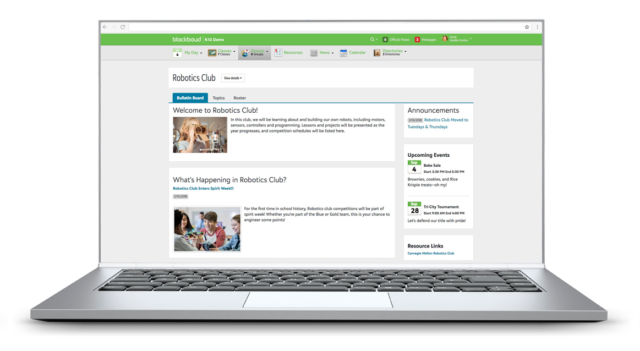
In today’s constantly changing world, organizations always look for ways to enhance the learning experience and encourage employee collaboration. One effective approach is to incorporate social learning features into a Learning Management System (LMS). Social learning within an LMS enables employees to participate in communities of practice, where they can exchange knowledge and ideas and learn from one another.
In this blog post, we will delve into the concept of learning in LMS and highlight the advantages of fostering communities of practice within an organization.
Understanding Social Learning in LMS
Social learning in LMS refers to utilizing social media tools and functionalities to facilitate learning and knowledge sharing within an organization. Traditional LMS platforms primarily focus on delivering content like courses and quizzes. However, by incorporating interactions and collaboration, social learning brings a dimension to LMS. Therefore, the popularity of modern LMS like Blackbaud software, Adobe Learning Manager, Teachable, Thinkific, and others has increased exponentially.
Within an LMS environment, social learning can manifest through discussion forums, chat rooms, virtual classrooms, and even features resembling networking platforms. These tools enable employees to connect with each other, share their expertise, and engage in learning. By establishing communities of practice, organizations can harness the intelligence of their workforce while promoting continuous growth and development.
Benefits of Establishing Communities of Practice
1. Sharing Knowledge and Collaborating
One of the advantages of establishing communities of practice in a Learning Management System (LMS) is the ability to facilitate knowledge sharing and collaboration. When employees connect with their colleagues and subject matter experts, they can exchange ideas, seek advice, and tap into a wealth of knowledge. This fosters a culture of learning and enables the dissemination of best practices throughout the organization.
2. Accelerating Learning and Problem Solving
By leveraging learning within an LMS, organizations can expedite the learning process and enhance problem-solving capabilities. When employees have access to a network of peers who have encountered challenges, they can learn from their experiences and avoid duplicating efforts. This saves time, promotes innovation, and improves decision-making.
3. Employee Motivation
Social learning in an LMS has an impact on employee engagement and motivation levels. Employees feel valued and appreciated when they are provided with opportunities to connect with individuals and contribute to a community. This sense of belonging and purpose cultivates a work environment that fuels employee satisfaction and boosts productivity.
4. Breaking Down Silos
By establishing communities of practice within an LMS, organizations can break down silos that hinder functional collaboration. In structures, employees often face challenges when it comes to connecting and collaborating across different departments or teams.
However, the implementation of learning in a Learning Management System (LMS) encourages employees to interact and learn from individuals outside of their circles. This fosters a culture of collaboration and innovation.
5. Continuous Professional Development
Continuous professional development is crucial for success in today’s evolving business landscape. By leveraging the benefits of learning in an LMS, organizations can equip their employees with the tools and resources to stay ahead. Communities of practice within an LMS enable employees to access information, connect with industry experts, and engage in learning activities.
Best Practices for Establishing Communities of Practice
Creating thriving communities of practice within an LMS requires planning and execution. Here are some key considerations to keep in mind while doing so within your company.
- Identify subject matter experts to recognize and involve subject matter experts within your organization who can contribute insights to the community discussions.
- Foster a welcoming environment to cultivate an inclusive atmosphere where employees feel comfortable sharing their knowledge and experiences.
- Appoint community managers who can facilitate discussions, offer guidance, and ensure active participation within the community.
- Encourage engaged participation to stimulate involvement by providing engaging content, encouraging discussions, and fostering collaboration among community members.
- Encourage your employees to engage in the community by encouraging them to ask questions, share their insights, and provide feedback. It’s important to acknowledge and reward their contributions as this will further motivate them to stay engaged.
- Make sure that your employees have access to support and resources. It will help them make the most of their learning experience and address any challenges.
Conclusion
Social learning within the LMS platform provides organizations with a tool to foster collaboration, accelerate learning, and build communities of practice. By tapping into the intelligence of your workforce, you can create a culture of learning and innovation. By implementing procedures and providing support, you can unlock the full potential of social learning in your LMS platform and enjoy the benefits that come with building vibrant communities of practice.


































